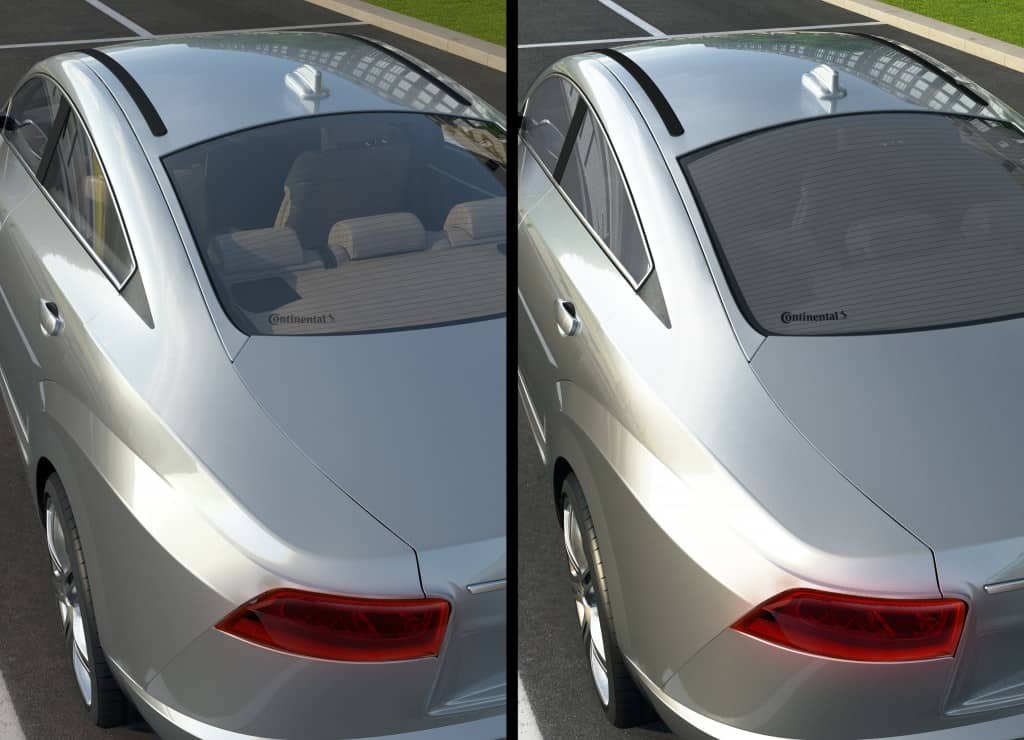 At CES 2016, Continental will show a demo car with windows that can be darkened at the touch of a button. “Intelligent Glass Control” uses special films inside the glass that change their transparency via electric control signals.
At CES 2016, Continental will show a demo car with windows that can be darkened at the touch of a button. “Intelligent Glass Control” uses special films inside the glass that change their transparency via electric control signals.
The company claims the windows make driving more comfortable and safer, such as the case when driving into low sun on the horizon, a driver usually takes a hand off the wheel for the sun visor.
The film helps reduce solar radiation, keeps heat out of the car and reduces the drain on the air conditioning. Because son visors are no longer needed, the added weight of the sun visors is removed. Continental’s calculations have shown that the CO2 emissions are reduced by four grams per kilometer and can increase the range of electric vehicles by around 5.5%.
When the car is parked the Intelligent Glass darkens which keeps thieves from seeing what is inside the car.
This production-ready film technology is based on embedded particles, which arrange themselves randomly when unpowered and darken the window from outside, while retaining transparency from the inside to the outside. If a voltage is applied, the particles systematically align themselves in parallel, so that the window becomes permeable to light in both directions. The connection to the vehicle system enables the windows to lighten automatically when key or smartphone is near the car.
This film is still rather cost-intensive for mid-range vehicles with large glazed areas. However, due to further promising developments with initial applications in the mobile area, it is anticipated that the prices will quickly drop. This technology is already deployed in the car in order to darken the interior and exterior mirror and thus prevent glare effects. The disadvantage of larger surfaces is the high energy requirement needed to achieve short switching times.
Continent plans to adjust the algorithms so that the behavior of the windows offers maximum safety and comfort for the driver while improving emission values. The appearance of all windows is optimized with an intelligent reaction to the changing lighting situations as well as automatic compensation of temperature and aging effects.